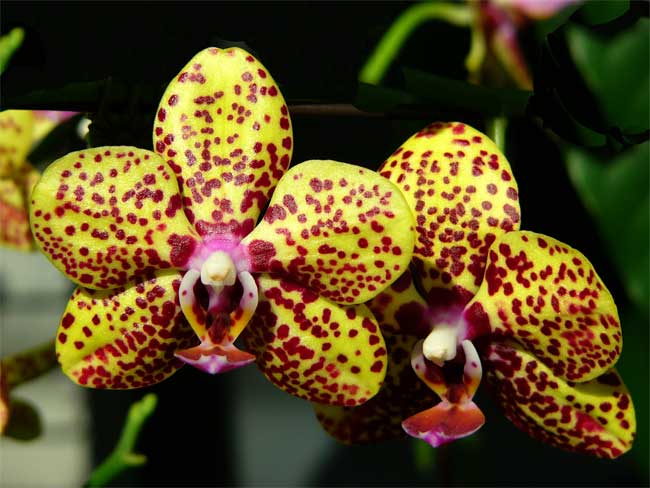Evolutionary 'Big Bang' Created Florist's Paradise

From the ubiquitous daisy to the fantastical orchid, flowering plant species are as diverse as they are numerous. Turns out, these bloomers went through an evolutionary "Big Bang" of sorts some 130 million years ago, a brief era of explosive floral diversification at a time when dinosaurs walked the Earth.
The origin of flowering plants called angiosperms has long baffled scientists, with Charles Darwin famously referring to the plant puzzler as an "abominable mystery."
"One of the reasons why it's been hard to understand evolutionary relationships among the major groups of flowering plants is because they diversified over such a short time frame," said researcher Robert Jansen, professor of integrative biology at the University of Texas at Austin.
Two papers published online this week in the Proceedings of the National Academy of Sciences, reveal the evolutionary relationships between major groups of plant species. The results show a stunning diversification occurred within a period of 5 million years just after the plants first appeared on the scene and gave rise to today's five major lineages of flowering plants.
"Flowering plants today comprise around 400,000 species," said Pam Soltis, curator at the University of Florida's Florida Museum of Natural History. "To think that the burst that gave rise to almost all of these plants occurred in less than 5 million years is pretty amazing—especially when you consider that flowering plants as a group have been around for at least 130 million years."
Pam and UF colleague Doug Soltis analyzed 61 genes from 45 plant species, while another team led by Jansen analyzed 81 genes from 64 plant species. Both groups focused on the genomes of the chloroplast, an organelle shared by all green plants that is responsible for their ability to photosynthesize.
Then, they arranged the gene sequences into diagrams to reflect the relationships among plant lineages throughout evolutionary history. From the length of the diagrams' branches along with known rates of genetic change, the teams estimated that three lineages went through a major diversification in an evolutionary "blink of an eye."
Sign up for the Live Science daily newsletter now
Get the world’s most fascinating discoveries delivered straight to your inbox.
As for the cause of the explosion of plant diversity, that's still a floral mystery. Perhaps a major climatic event was the trigger, the researchers suggest. Another idea is that a new evolutionary trait, such as the development of a plant's water-conducting tube, jumpstarted the diversification.
- Video: How a Parasitic Plant Strangles its Host
- Life's Little Mysteries: Do Plants Have Sex?
- Top 10 Poisonous Plants
Jeanna Bryner is managing editor of Scientific American. Previously she was editor in chief of Live Science and, prior to that, an editor at Scholastic's Science World magazine. Bryner has an English degree from Salisbury University, a master's degree in biogeochemistry and environmental sciences from the University of Maryland and a graduate science journalism degree from New York University. She has worked as a biologist in Florida, where she monitored wetlands and did field surveys for endangered species, including the gorgeous Florida Scrub Jay. She also received an ocean sciences journalism fellowship from the Woods Hole Oceanographic Institution. She is a firm believer that science is for everyone and that just about everything can be viewed through the lens of science.










